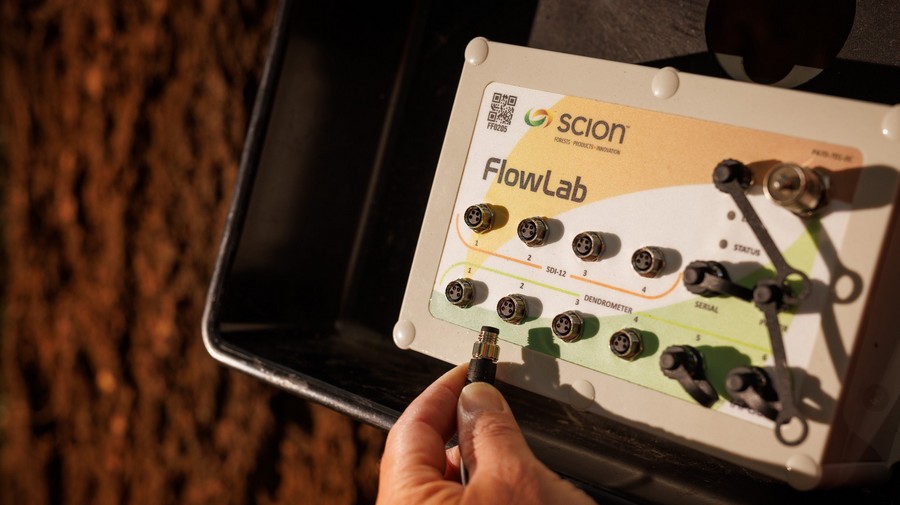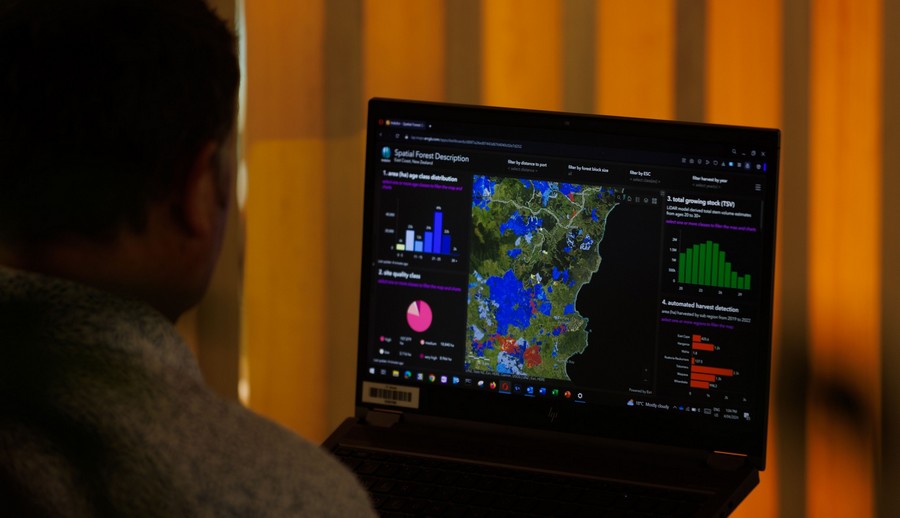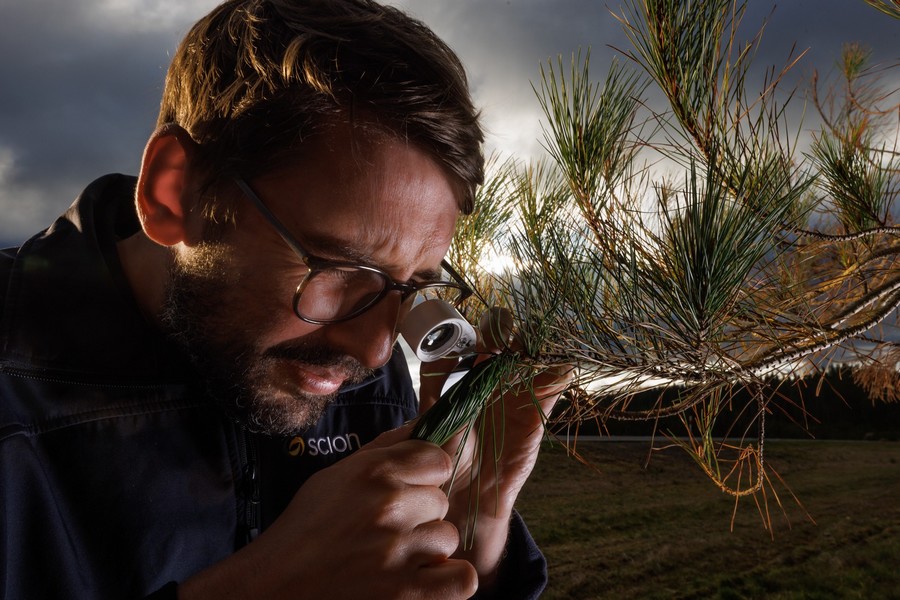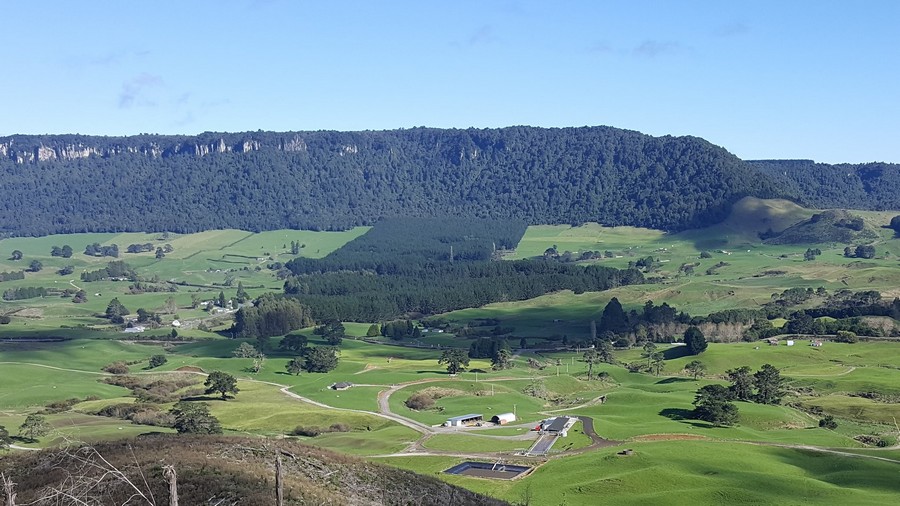What's new at Scion Edition No. 1
Forestry Research Updates
Welcome to the first edition of our newsletter written specifically with you, the forestry industry, in mind. I hope to highlight our research that will provide real impact within your business and sector and look forward to further engagement with you. Each story has a key contact person and I encourage you to reach out to them for further information and discussion. I also welcome you to connect with me directly – your thoughts and feedback are important to me.
We intend to deliver a quarterly newsletter and to ensure it adds value and is relevant to you – please let us know what else you would like to hear about.
If you’d like to receive these updates direct to your inbox, please sign up here.
Henri Bailleres, General Manager for Forests To Timber Products.

Forest Flows
The Forest Flows research programme is investigating how water flows through forests, and how water can be managed sustainably in the face of climate change. This research is particularly important for the forestry industry, as it provides insights into how extreme weather events affect forests and how forests can be managed to prevent or mitigate flood damage. Thanks to unprecedented and generous support from the Forest Growers Levy trust and industry, the programme will continue monitoring and analysis until the end of 2025.
The programme includes:
- A world-leading network of sensors, a wireless internet of things (IoT) system, generating big data. This has underpinned the development of a model predicting how forests respond to different weather conditions and soil types. A 'digital twin' of forest environments integrates data from various sources and uses artificial intelligence to analyse and predict how forests grow and use water resources.
- This model will be invaluable for the forestry industry, contributing to more sustainable and resilient forest management practices in the face of a changing climate.
- Engagement with various stakeholders to understand their needs and values. The outputs from this ensures the research benefits are shared widely and contribute to sustainable water management practices.
- Programme results will be shared at upcoming workshops.
Read more: When the rain pours, where does the water flow
Contact: Dean Meason Senior Scientist, Plant Development and Physiology; Programme Leader, Forest Flows

Virtual Reality tool to train Foresters
A future where foresters are trained to thin trees in a virtual-reality (VR) environment before real-world training could be just around the corner. Scion’s Virtual Thinning project aims to create an interactive and 3-dimensional VR training tool to supplement more advanced on-site training.
The VR tool has more than 70 adjustable variables, such as stocking rate, tree age and light dominance, and Scion wants to identify about half a dozen most useful to foresters, before finalising a training prototype by June.
Once complete, the tool will provide:
- Trainees with initial understanding of thinning complexities.
- Trainee understanding of the economic value in forests.
- Initial training in a range of scenarios without the cost of travel to site.
- A safer, efficient training environment where mistakes aren’t reflected in the real world.
Watch: Virtual reality in forestry training
Contact: Grant Evans Portfolio Leader, New Value Digital Forests and Wood Sector

Machine learning gives a new window into commercial forests
Scion and Indufor Asia Pacific have released a prototype of an interactive tool to make management, harvesting and wood processing decisions easier. Forest Insights is more than just a mapping tool, it uses machine learning with satellite imagery and LiDAR to automatically generate critical inventory data to create a dashboard view of a forest.
Forest owners, managers and wood processors can check the changing availability and growth of planted forests over time where the tool automatically:
- Detects and identifies tree species
- Outlines forest boundaries
- Tracks forest activities over time such as planting, thinning, harvesting
- Provides details on age class, area in production, stems per hectare
Starting with modelling of East Coast pine forests, Scion plans to expand into other regions with Bay of Plenty next cab off the rank.
Forest Insights will help level the playing field for smaller forest owners. Those who own smaller woodlots or stands can use the tool to see where other small lots in their region are maturing at a similar time and potentially co-operate to negotiate better pricing from mills.
Read more: Forest Insights to revolutionise forest inventory management
Contact: Grant Evans Portfolio Leader, New Value Digital Forests and Wood Sector

Safeguarding New Zealand’s forests
Red needle cast (RNC) affects forest growth and productivity. Outbreaks can be difficult to detect in their early stages so Scion, in conjunction with the Forest Owners’ Association, is using remote sensing to map and monitor outbreaks, with this information building to the development of a model to help predict RNC disease outbreaks.
The research is showing that RNC thrives in prolonged wet conditions and is already pointing to proactive measures that can be taken to help control disease outbreaks, including copper treatment. The research is also helping to identify resistant tree varieties, which can safeguard the long-term viability of these forests.
Scion has used weather data to predict RNC during summer which is 7 – 8 months before peak expression of the disease in September. Accurate predictions were made for the Gisborne region over the last five years of RNC expression. This approach can be used to mitigate the impact of red needle cast by focusing early surveillance and treatment measures.
Successful research outcomes could lead to a transformative disease management approach with improved forest health, increased productivity, and greater resilience against foliar diseases.
Read more: Research wages war against a silent threat in our planted forests
Contact: Emily McLay Forest Pathologist

Scion Counters Claims
Scion principal scientist, Dr Peter Clinton, says planting trees on pastures in New Zealand restores soil to be similar to its original condition, and that recent claims in the media about converting pasture to forests damages soil health, were misleading.
- Soil condition under planted pine forests is similar to soil in indigenous forests, including nutrient and pH levels.
- Afforestation of farmland reverses changes to soils that result from the regular application of lime under conversion to agricultural production.
- Soils under intensively managed pasture can be more compacted than forest soils.
- Ecosystem benefits of planted forests extend beyond soil health; improved water quality, soil structure, reduced erosion, biodiversity enhancement, and regional economic development.
Read more: Planting trees on pasture can have a positive impact on soil health
Contact: Dr Peter Clinton Principal Researcher, Microbial Ecology - Soil Systems
